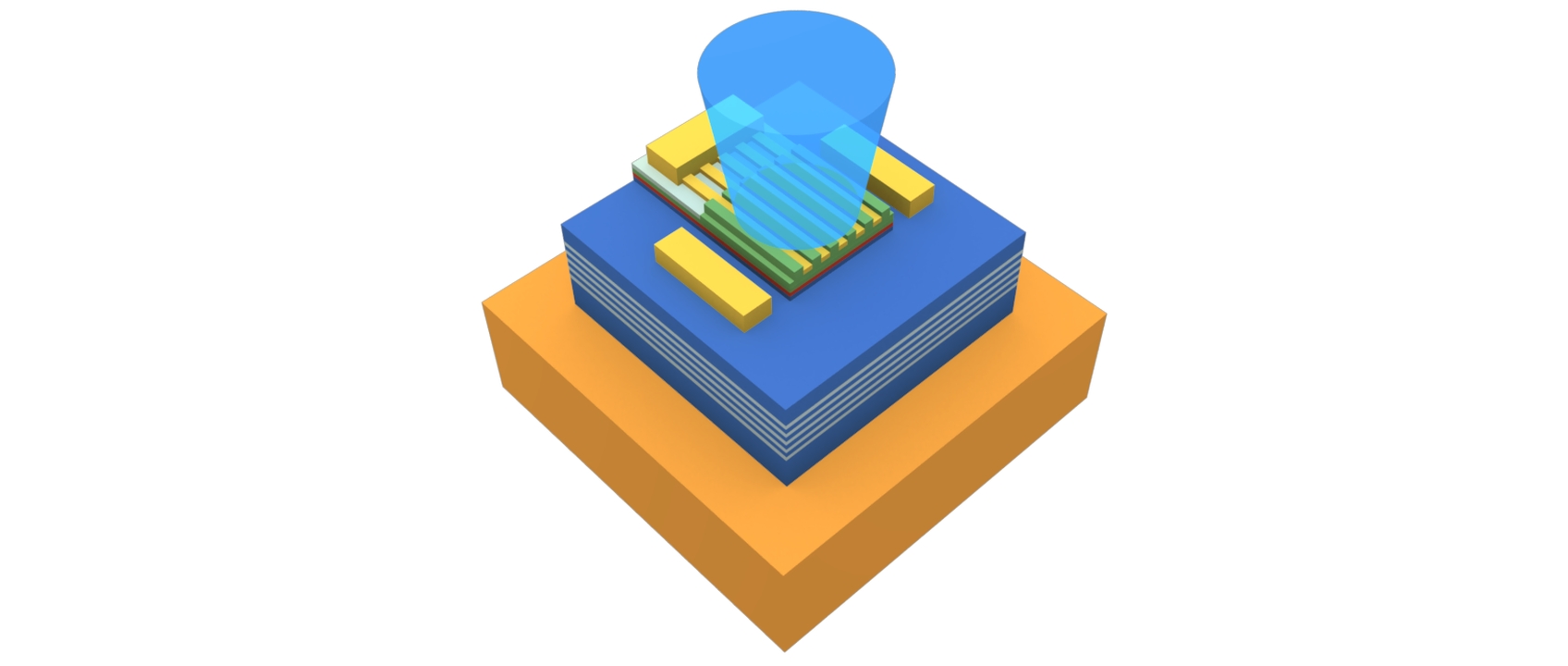Modelling of nitride-based vertical-cavity surface-emitting lasers
NCN OPUS 2014/13/B/ST7/00633
The main objective of this project was investigation and explanation of the physical phenomena limiting the performance characteristics and hampering the development of nitride-based vertical-cavity surface-emitting lasers (VCSELs) and vertical-external-cavity surface-emitting lasers (VECSELs) designed for emission in the violet-green wavelength range. The main advantages of these lasers are: much better beam quality than in conventional edge-emitting lasers and natural possibility of manufacturing 2D laser arrays. Nitride-based surface-emitting devices may find many applications for example: in holographic data storage systems, transparent displays, telecommunication systems based on plastic optical fibres, free-space telecommunication (Li-Fi), medicine, health care, scientific research. The proposal was focused on new designs and material solutions, which could improve performance of existing devices, open new possibilities and allow the extension of the spectrum toward longer wavelengths, which are currently unavailable for these lasers. The proposed theoretical research was carried out with the aid of complete computer simulation of the nitride-based V(E)CSELs operation. The analysis was done using a fully self-consistent three-dimensional numerical model consisting of six basic strongly interrelated modules describing: band structure as well as electrical, thermal, optical, carrier transport and gain phenomena. The model was developed and implemented at the Institute of Physics, Lodz University of Technology. In addition to the new material and design solutions improving performance of the analysed lasers, the following structures have been proposed: (i) the new nitride-based VECSEL designed for emission at 450 nm, which could theoretically operate in continuous-wave mode in contrast to the nitride VECSELs demonstrated so far, (ii) the novel design of nitride-based VCSEL with metallic MHCG (Monolithic High-index Contrast Grating) in place of a standard dielectric upper DBR (Distributed Bragg Reflector) mirror. This solution helps to overcome the drawbacks of currently available nitride-based VCSELs and may contribute to development of a new class of nitride-based VCSELs characterized by unparalleled performance in the near future.



